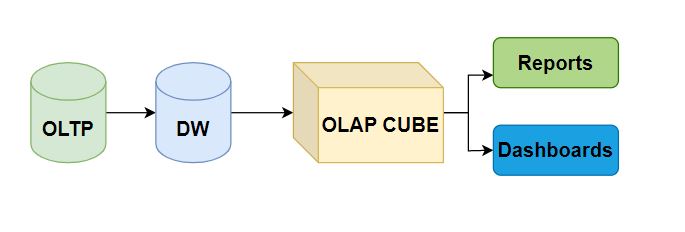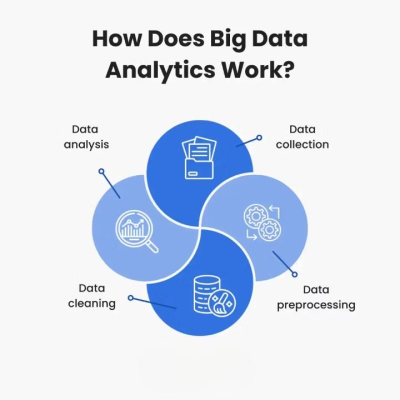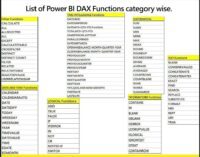SQL Server Analysis Services (SSAS) is a Microsoft SQL Server component that provides online analytical processing (OLAP) and data mining capabilities. It allows to create tabular and multidimensional data models that can be used for reporting, analysis, and business intelligence purposes. Multidimensional mode is well-suited for complex analytical scenarios and Tabular models provide a simpler and more familiar development experience for those familiar to working with relational databases.

In modern reporting system SSAS plays a crucial role due to the following reasons:
- Multidimensional Analysis
- Efficient Data Storage and Retrieval
- Aggregation and Calculation
- Data Security and Role-based Access
- Data Integration
- Interactive Reporting and Data Visualization
- Scalability and Performance Optimization
- Data Mining and Predictive Analytics
Multidimensional Analysis:
SSAS enables multidimensional analysis of data, support to explore information from various dimensions, such as time, customer, product, and demography.
In a multidimensional data model, data is organized into dimensions and measures. Dimensions represent the different attributes or categories by which data can be analyzed, such as time, geography, product, customer, and so on. On the other hand, Measures are calculated from fact table. Measures are the numerical values that represent the metrics or facts being analyzed, such as sales revenue, quantity sold, or profit.
Multidimensional analysis in SSAS offers various functionalities, including:
1. Slicing and dicing:
Users can slice the data by selecting specific values from dimensions, such as filtering data for a particular region, Branch, product category and Time. Dicing refers to analyzing data by selecting multiple values across different dimensions.
2. Pivot tables and pivot charts:
SSAS can be integrates with tools like Microsoft Excel and Power BI that allowing users to create pivot tables and pivot charts for multidimensional analysis. These visual representations make it easier to analysis, interpret and present the data.
3. Hierarchies and member properties:
Dimensions support hierarchical structures, such as year > quarter > month> Day. Users can navigate through hierarchies to analyze data at different levels. Furthermore, dimensions can have member properties that provide further information about the dimension values, such as product descriptions or customer demographics.
4. Drill-through actions:
Drill-through actions provide detailed information about a specific data point. For example, users can drill through a sales value to see the individual transactions.
5. Calculated measures:
It supports the creation of calculated measures. Calculated measures are derived measures based on existing measures or standard measures. This enables users to perform calculations, ratios, and comparisons on the fly during analysis.
This functionality helps the users to gain deeper insights into their data and make informed business decisions.
Efficient Data Storage and Retrieval:
SSAS stores data in a highly optimized and compressed format, known as a multidimensional cube. This cube structure support efficient storage and retrieval of data. OLAP cube can improved performance when querying and analyzing large datasets.
Aggregation and Calculation:
It supports the creation of pre-calculated aggregations, which can significantly speed up query response times for complex analytical queries. It also provides a multiple set of functions and expressions for creating calculated measures and calculated members, allowing users to perform advanced calculations and transformations on the data.
Data Security and Role-based Access:
SSAS offers robust security features, including role-based access control and row-level security. These features ensure that only authorized users can access specific data and that sensitive information is protected.
Data Integration:
SSAS can integrate with various data sources, including relational databases, data warehouses, and big data platforms. It supports data extraction, transformation, and loading (ETL) processes, allowing organizations to consolidate and transform data from multiple sources into a unified data model.
Interactive Reporting and Data Visualization:
SSAS integrates seamlessly with popular reporting and visualization tools, such as Microsoft Power BI and Excel. This integration enables users to create interactive reports, dashboards, and visualizations that leverage the multidimensional data model created in SSAS.
Scalability and Performance Optimization:
SSAS is designed to handle large volumes of data and high user concurrency. It provides features like partitioning, caching, and proactive caching to optimize performance and scale to meet the needs of growing data and user demands.
Data Mining and Predictive Analytics:
SSAS includes data mining algorithms and tools that enable organizations to discover patterns, relationships, and trends in their data. This can be used for predictive analytics, customer segmentation, market analysis, and other data-driven insights.
SSAS empowers organizations to create a robust and flexible reporting system that can handle complex analytical requirements. It supports the users to analyze data from different angles, improve performance, ensure data security, and deliver actionable insights to decision-makers.



